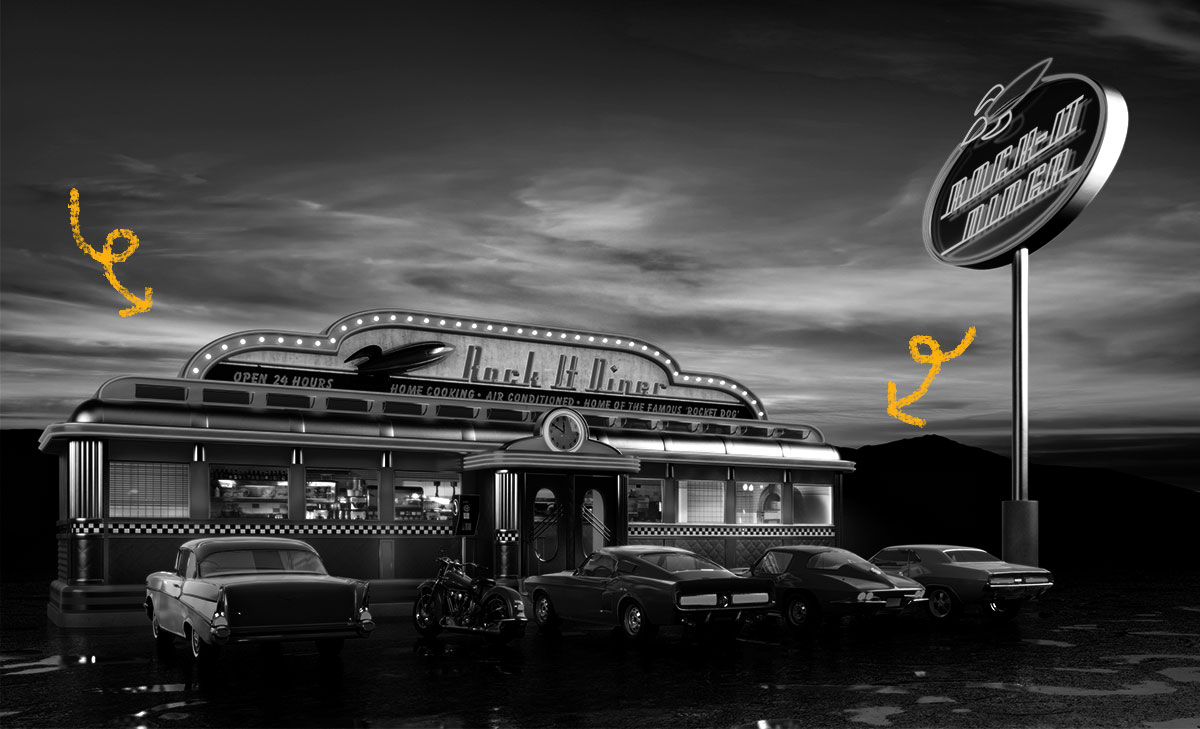The history of diners begins in Providence, Rhode Island. There, in 1872, Walter Scott introduced the first “night lunch wagon,” which came out at dusk to serve workers on the late shift, theatergoers, and anyone out late and in search of a hot, inexpensive meal. Customers would purchase their food and then sit on the curb to eat. Lunch wagons evolved into “rolling restaurants” that had a few seats inside. The first of these was run by Samuel Jones in 1887. Soon, the name evolved to “lunch cars” and then “dining cars” – which was shorted to just “diners” sometime around 1924. The first stationary lunch car began operating around 1913 and was made by Jerry O’Mahony, the founder of one of the factories that made and shipped diners. (Diners, unlike coffee shops, were generally manufactured elsewhere and then shipped to the site.) When diners reached peak popularity in the 1950s, there were about 6,000 of them all across the country. However, the highest concentration of diners remained in the Northeast region. Today, there are only about 2,000 diners left, with over 600 of those being in New Jersey. While the menus at many of these diners have changed to include heart-healthy options and vegetarian fare, the basic characteristics of the iconic American diner live on – it’s a friendly place to get an inexpensive, hot meal.

Your go-to guide for weird history facts
Subscribe to the FREE daily email that makes learning about history fun.


